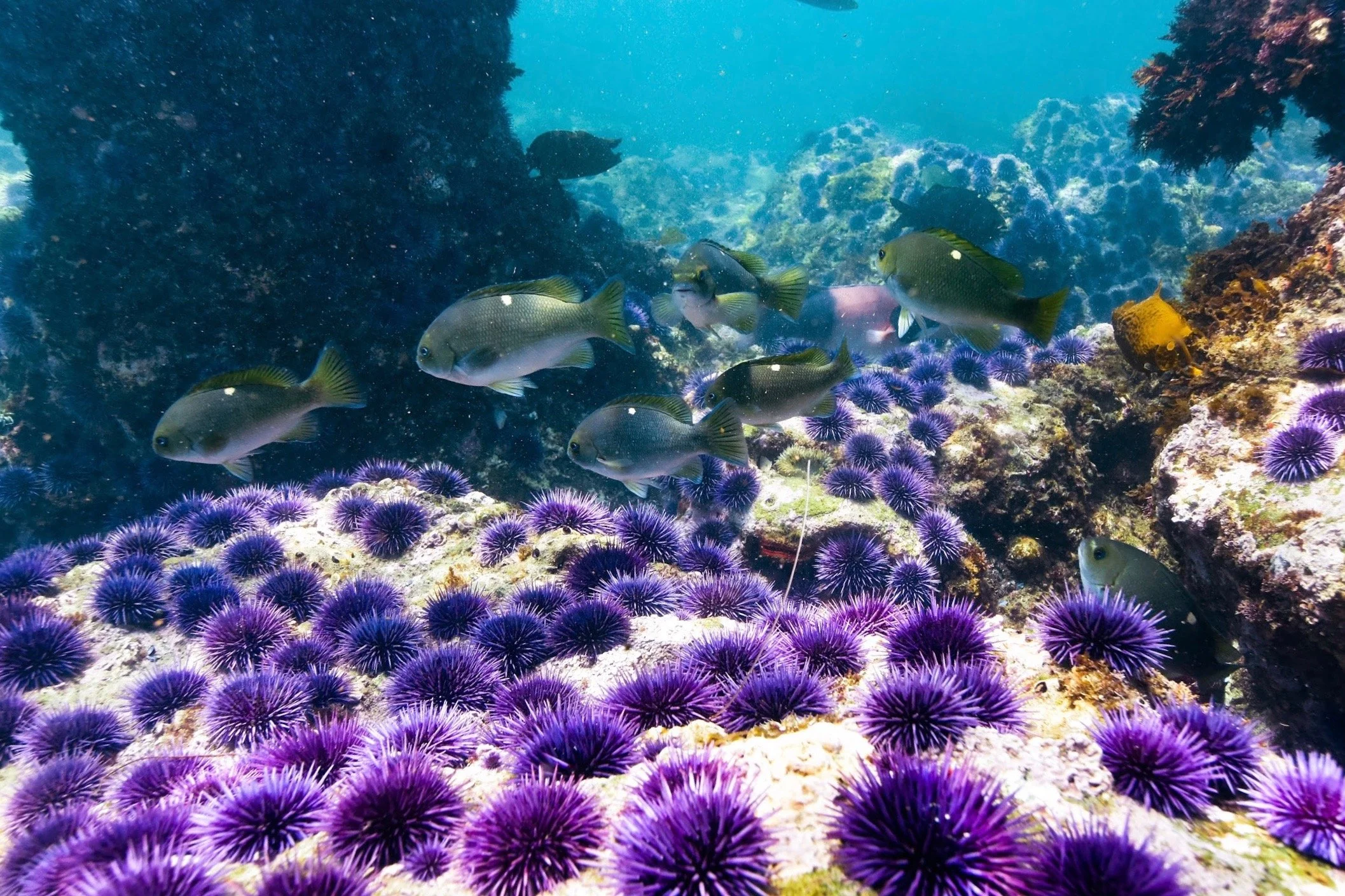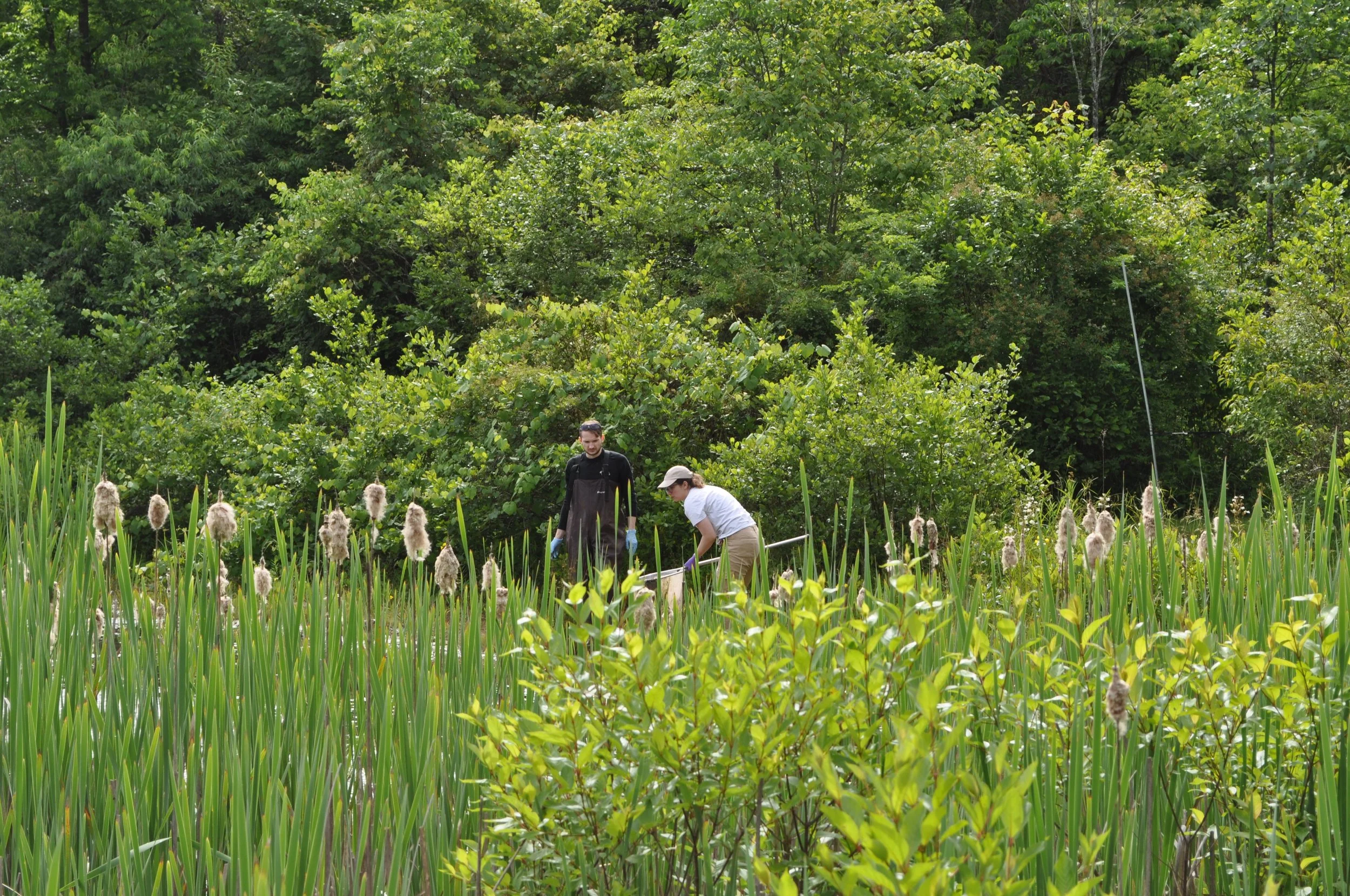Animal nutrition in a changing world
Food provides essential nutrients and fuel that animals need to thrive. But humans are impacting what animals have available to eat and the quality of that food. I am interested in how changes in nutrition impact the ability of animals to live in extreme environments. Much of my work in this area has focused on marine fishes, where I have been studying how changes in food quantity, options, and quality impact thermal plasticity and thermal tolerance.
Opaleye and urchins in the SB Channel. Photo: Jacey Van Wert
The role of microbes in environmental physiology
Ponds are dynamic environments that experience dramatic daily fluctuations in temperature and oxygen. And yet, they are also home to the developing larvae of several species of amphibians. I’m interested in the role that amphibian microbiomes play in facilitating their success in the pond.
Pond sampling with undergrad, Josh Rennekamp. Photo by Robin Chambers
Surviving and thriving in variable environments
How do animals cope with environmental changes occurring across timescales (from minutes to days to weeks to years)? While scientists are increasingly appreciating and incorporating natural variability into experiments, this is an active area of research with so much still to be discovered! I’m interested in the mechanisms animals use to deal with different types of environmental variation.
Cultus Lake research Laboratory, British Columbia


